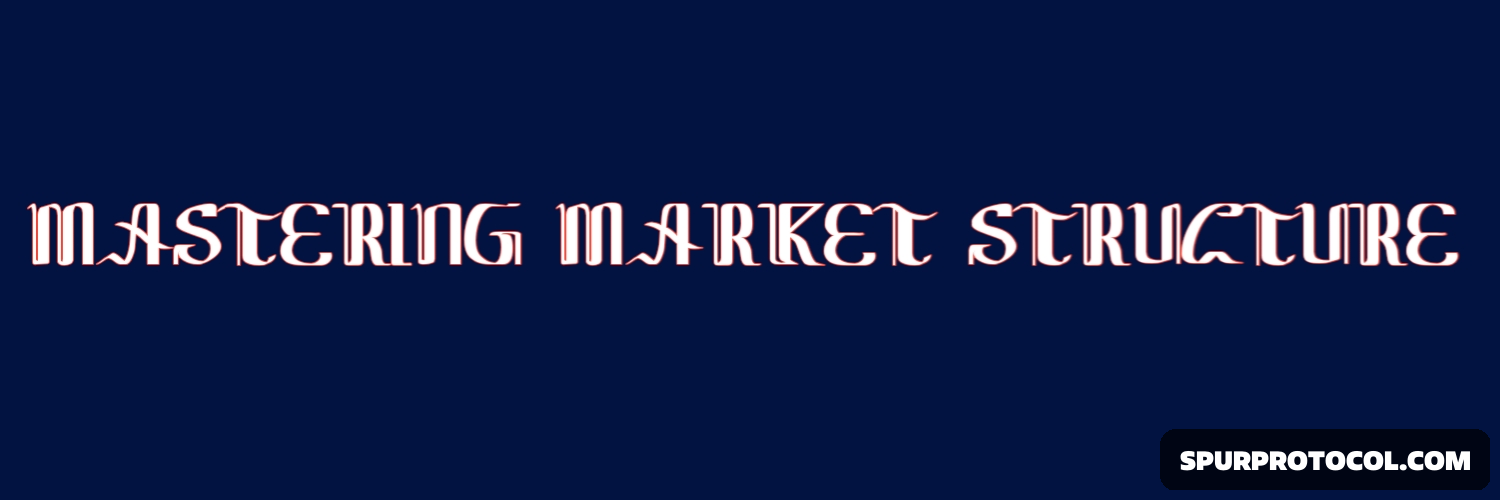Mastering Market Structure: Reading Crypto Price Action Like a Pro
If you’ve been trading crypto for a while and still rely heavily on indicators, it's time to level up. Indicators can be helpful, but price action and market structure are where the real edge lies. They tell you what the market is doing right now — not just what it might do. Understanding market structure allows you to anticipate moves, enter with confidence, and manage trades like a professional.
What is Market Structure?
Market structure refers to the behavior and layout of price movements. It’s the pattern of highs and lows that define the trend — whether the market is in an uptrend, downtrend, or moving sideways.
A solid understanding of market structure allows traders to:
Identify the current trend
Pinpoint potential reversals
Enter at high-probability zones
Exit before price turns against them
3 Core Phases of the Market
Every price chart moves through these core stages repeatedly:
1. Accumulation Phase
Price consolidates in a range after a downtrend.
Smart money (institutions, large holders) quietly buys without moving price drastically.
Volume increases subtly, and volatility remains low.
Example: BTC ranging at a low after a major dump.
2. Markup Phase (Uptrend)
The market starts printing higher highs (HH) and higher lows (HL).
Momentum builds, and retail traders begin to buy.
This is where breakouts happen, and price begins to trend strongly.
Ideal phase for trend-following strategies.
3. Distribution Phase
Similar to accumulation, but happens at the top.
Smart money is offloading while retail chases pumps.
Price begins to stall, with false breakouts and lower volume on rallies.
After distribution, comes the markdown phase — the real downtrend.
Understanding Price Action Patterns
Price action speaks loudest through highs and lows. Here's how you read it:
🔺 Uptrend Structure:
Higher Highs (HH)
Higher Lows (HL)
Entry: Wait for a pullback to a higher low.
Stop Loss: Below the most recent HL.
Trend is intact until a lower low (LL) is formed.
🔻 Downtrend Structure:
Lower Highs (LH)
Lower Lows (LL)
Entry: On a retest of a lower high.
Stop Loss: Above the most recent LH.
Trend remains bearish until a higher high (HH) breaks structure.
📉 Break of Structure (BOS)
This is your first sign of a trend reversal.
Example: Price forms a LL after making a HH → signals possible downtrend.
Key Zones You Must Know
1. Support and Resistance
These are horizontal levels where price reacts strongly.
Look for wicks and volume spikes — that's where buyers or sellers are active.
2. Supply and Demand Zones
Areas where price had a sharp move up (demand) or down (supply).
Price often returns to these zones before continuing in its original direction.
3. Liquidity Zones
Levels where stop losses are stacked (above highs or below lows).
Smart money often drives price to these zones to grab liquidity before moving the opposite way.
Combining Structure with Strategy
Let’s look at a simple structure-based trade setup:
Scenario: BTC is in an uptrend (HH, HL). Price pulls back to a previous HL and enters a demand zone.
Steps:
1. Wait for bullish confirmation — like a bullish engulfing candle.
2. Enter the trade near the HL.
3. Stop loss just below the demand zone.
4. Target next HH, or use Fibonacci extensions to project targets.
This setup requires no indicators — just your eyes, patience, and structure awareness.
Common Mistakes to Avoid
1. Entering before confirmation — Wait for a retest or a rejection wick.
2. Ignoring the higher time frame — Always check structure on daily and 4H before going into 1H or 15m.
3. Chasing price — Don’t jump in after a breakout. Wait for the pullback.
4. Overcomplicating — You don’t need 5 indicators if structure is clean.

